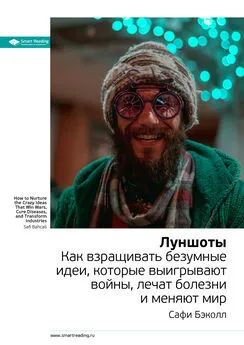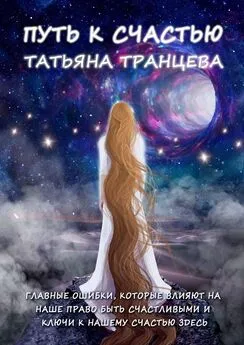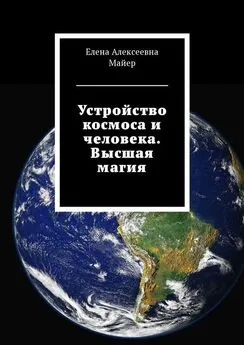Приямвада Натараджан - Карта Вселенной [Главные идеи, которые объясняют устройство космоса]
- Название:Карта Вселенной [Главные идеи, которые объясняют устройство космоса]
- Автор:
- Жанр:
- Издательство:Альпина нон-фикшн
- Год:2019
- Город:Москва
- ISBN:978-5-0013-9026-8
- Рейтинг:
- Избранное:Добавить в избранное
-
Отзывы:
-
Ваша оценка:
Приямвада Натараджан - Карта Вселенной [Главные идеи, которые объясняют устройство космоса] краткое содержание
Астрофизик Приямвада Натараджан находится на переднем крае исследований, она в буквальном смысле создает карты Вселенной — схемы распределения темной материи. В своей книге Натараджан рассказывает об открытиях, изменивших наши представления о Вселенной в прошедшем веке, о науке, стоящей за ними, и о пути признания радикальных научных теорий; размышляет о том, почему новые идеи о Вселенной и нашем месте в ней часто встречают в штыки даже в научном сообществе. Ведь наука, всегда меняющаяся и неполная, какой она и должна быть, — это лучший способ понять нашу чудесную, таинственную Вселенную.
Карта Вселенной [Главные идеи, которые объясняют устройство космоса] - читать онлайн бесплатно ознакомительный отрывок
Интервал:
Закладка:
Brotton, Jerry. A History of the World in Twelve Maps. New York: Viking, 2012.
Carroll, Sean. The Particle at the End of the Universe: How the Hunt for the Higgs Boson Leads Us to the Edge of a New World. New York: Dutton, 2012.
Corfield, Richard. Lives of the Planets: A Natural History of the Solar System. New York: Basic Books, 2007.
Dalal, Ahmad. Islam, Science, and the Challenge of History. New Haven: Yale University Press, 2010.
Davies, Paul. The Goldilocks Enigma: Why Is the Universe Just Right for Life? New York: Allen Lane, 2006.
Davies, Paul, and J. Gribbin. The Matter Myth: Dramatic Discoveries That Challenge Our Understanding of Physical Reality. New York: Simon and Schuster, 2007 (reissue).
Dyson, Freeman. The Scientist as Rebel. New York: New York Review of Books, 2014.
Ferguson, Kitty. Measuring the Universe: Our Historic Quest to Chart the Horizons of Space and Time. New York: Walker Books, 1999.
—. Tycho and Kepler. New York: Walker Books, 2002.
Freese, Katherine. The Cosmic Cocktail: Three Parts Dark Matter. New York: W. W. Norton, 2003. Reprint, Princeton: Princeton University Press, 2014.
Galison, Peter L. Big Science: The Growth of Large-Scale Research. Stanford: Stanford University Press, 1994.
—. Einstein’s Clocks, Poincaré’s Maps: Empires of Time. New York: W. W. Norton, 2004.
—. How Experiments End. Chicago: University of Chicago Press, 1997.
Gates, Evalyn. Einstein’s Telescope: The Hunt for Dark Matter and Dark Energy in the Universe. New York: W. W. Norton, 2009.
Gingerich, Owen. The Book Nobody Read. New York: Penguin, 2005.
Gleiser, Marcelo. The Island of Knowledge: The Limits of Science and the Search for Meaning. New York: Basic Books, 2014.
Goldberg, David. The Universe in the Rearview Mirror: How Hidden Symmetries Shape Reality. New York: Dutton: 2013.
Greene, Brian. The Elegant Universe: Superstrings, Hidden Dimensions, and the Quest for the Ultimate Theory. New York: W. W. Norton, 2003.
—. The Fabric of the Cosmos: Space, Time, and the Texture of Reality. New York: Knopf, 2004.
Gribbin, John. Alone in the Universe: Why Our Planet Is Unique. London: Wiley, 2011.
—. In Search of the Big Bang. London: Bantam, 1986.
—. The Origins of the Future: Ten Questions for the Next Ten Years. New Haven: Yale University Press, 2006.
Grinnell, Frederick. Everyday Practice of Science: Where Intuition and Passion Meet Objectivity and Logic. Oxford: Oxford University Press, 2009.
Hawking, Stephen. A Brief History of Time: From the Big Bang to Black Holes. London: Bantam, 1988.
—. The Universe in a Nutshell. London: Bantam, 2001.
Hellman, Hal. Great Feuds in Science: Ten Disputes That Shaped the World. New York: Barnes and Noble, 1998.
Holmes, Richard. The Age of Wonder: How the Romantic Generation Discovered the Beauty and Terror of Science. London: Pantheon, 2009.
Huth, John Edward. The Lost Art of Finding Our Way. Cambridge, MA: Harvard University Press, 2013.
Jaywardhana, Ray. Strange New Worlds: The Search for Alien Planets and Life Beyond Our Solar System. Princeton: Princeton University Press, 2011.
Kanas, Nick. Star Maps: History, Artistry and Cartography. London: Praxis, 2007.
Kirshner, Robert P. The Extravagant Universe: Exploding Stars, Dark Energy, and the Accelerating Cosmos. Princeton: Princeton University Press, 2004.
Kragh, Helge. Conceptions of Cosmos: From Myths to the Accelerating Universe — A History of Cosmology. Oxford: Oxford University Press, 2007.
—. Cosmology and Controversy: The Historical Development of Two Theories of the Universe. Princeton: Princeton University Press, 1996.
Krauss, Lawrence. A Universe from Nothing: Why There Is Something Rather than Nothing. New York: Atria Books, 2012.
Kuhn, Thomas S. Essential Tension: Selected Studies in Scientific Tradition and Change. Chicago: University of Chicago Press, 1977.
—. The Structure of Scientific Revolutions. Chicago: University of Chicago Press, 1962.
Levenson, Thomas. Einstein in Berlin. New York: Bantam, 2003.
Levin, Janna. How the Universe Got Its Spots: Diary of a Finite Time in a Finite Space. Princeton: Princeton University Press, 2002.
Liddle, Andrew, and Jon Loveday. The Oxford Companion to Cosmology. Oxford: Oxford University Press, 2008.
Lightman, Alan. The Accidental Universe: The World You Thought You Knew. New York: Corsair, 2013.
—. The Discoveries: Great Breakthroughs in 20th-Century Science, Including the Original Papers. New York: Pantheon, 2005.
—. Einstein’s Dreams. New York: Pantheon, 1993.
Lightman, Alan, and Roberta Brawer. Origins: The Lives and Worlds of Modern Cosmologists. Cambridge, MA: Harvard University Press, 1990.
Livio, Mario. The Accelerating Universe: Infinite Expansion, the Cosmological Constant, and the Beauty of the Cosmos. New York: Wiley, 2000.
—. Brilliant Blunders: From Darwin to Einstein — Colossal Mistakes by Great Scientists That Changed Our Understanding of Life and the Universe. New York: Simon and Schuster, 2013.
Mather, John C., and John Boslough. The Very First Light: The True Inside Story of the Scientific Journey Back to the Dawn of the Universe. New York: Basic Books, 2008.
Mazlish, Bruce. The Uncertain Sciences. New Haven: Yale University Press, 1998.
Miller, Arthur I. Empire of the Stars: Obsession, Friendship, and Betrayal in the Quest for Black Holes. Boston: Houghton Mifflin, 2005.
Munitz, Milton K., ed. Theories of the Universe: From Babylonian Myth to Modern Science. New York: Free Press, 1957.
North, John. Cosmos: An Illustrated History of Astronomy and Cosmology. Chicago: University of Chicago Press, 2008.
Ohanian, Hans C. Einstein’s Mistakes: The Human Failings of Genius. New York: W. W. Norton, 2008.
Ostriker, Jeremiah P., and Simon Mitton. Heart of Darkness: Unraveling the Mysteries of the Invisible Universe. Princeton: Princeton University Press, 2013.
Panek, Richard. The 4 % Universe: Dark Matter, Dark Energy, and the Race to Discover the Rest of Reality. New York: Mariner Books, 2011.
Popper, Karl. The Logic of Scientific Discovery. 2nd ed. New York: Routledge, 2002.
Price, Derek J. de Solla. Little Science, Big Science. New York: Columbia University Press, 1963.
Primack, Joel R., and Nancy Ellen Abrams. The View from the Center of the Universe: Discovering Our Extraordinary Place in the Cosmos. New York: Riverhead, 2006.
Randall, Lisa. Knocking on Heaven’s Door: How Physics and Scientific Thinking Illuminate the Universe and the Modern World. New York: Ecco, 2011.
Rees, Martin J. Before the Beginning: Our Universe and Others. New York: Perseus Books, 1997.
—. Just Six Numbers: The Deep Forces That Shape the Universe. New York: Basic Books, 2000.
—. Our Cosmic Habitat. London: Phoenix, 2002.
Scharf, Caleb. The Copernicus Complex: Our Cosmic Significance in a Universe of Planets and Probabilities. New York: Farrar, Strauss and Giroux, 2014.
—. Gravity’s Engines: How Bubble-Blowing Black Holes Rule Galaxies, Stars, and Life in the Cosmos. New York: Farrar, Strauss and Giroux, 2012.
Shapin, Steven. The Scientific Revolution. Chicago: University of Chicago Press, 1996.
Shostak, Seth. Confessions of an Alien Hunter: A Scientist’s Search for Extraterrestrial Intelligence. New York: National Geographic, 2009.
Silk, Joseph. The Big Bang. New York: W. H. Freeman, 2000.
—. The Infinite Cosmos: Questions from the Frontiers of Cosmology. Oxford: Oxford University Press, 2006.
Silvers, Robert B. Hidden Histories of Science. London: Granta, 1995.
Smolin, Lee. The Life of the Cosmos. Oxford: Oxford University Press, 1997.
—. The Trouble with Physics: The Rise of String Theory, the Fall of a Science, and What Comes Next. Cambridge, MA: Houghton Mifflin, 2006.
Sobel, Dava. Galileo’s Daughter: A Historical Memoir of Science, Faith, and Love. New York: Walker Books, 2000.
—. A More Perfect Heaven: How Copernicus Revolutionised the Cosmos. New York: Walker Books, 2011.
Tegmark, Max. Our Mathematical Universe: My Quest for the Ultimate Nature of Reality. New York: Vintage, 2015.
Thorne, Kip S. The Science of «Interstellar». New York: W. W. Norton, 2014.
Tyson, Neil deGrasse. Death by Black Hole: And Other Cosmic Quandries. New York: W. W. Norton, 2007.
Tyson, Neil deGrasse, and Donald Goldsmith. Origins: Fourteen Billion Years of Cosmic Evolution. New York: W. W. Norton, 2004.
Wilford, John Noble. The Mapmakers. New York: Vintage, 2000.
Благодарности
Появлению моего давнего любопытства к радикальным научным идеям и пути их развития я обязана людям, живущим на трех континентах. Мне посчастливилось участвовать во многих уникальных академических сообществах, которые сформировали мое мировоззрение как физика и как писателя. Моя собственная жизнь действующего ученого, генерирующего и испытывающего новые идеи, заставляет меня постоянно размышлять о прогрессе радикальных идей в современной астрономии.
Импульс для написания этой книги мне дала Мег Джейкоб — увлеченный вдохновитель. Проект Op-Ed Йельского университета и статьи в The New York Review of Books открыли для меня широкий круг читателей, за что я благодарна Кэти Оринштейн, Марку Лилле и Бобу Сильверсу. Я глубоко благодарна за поддержку моим друзьям из разных учреждений: это Йельский университет, Институт перспективных исследований Рэдклифф, Центр Белладжио при фонде Рокфеллера, Тринити-колледж, Кембридж, MIT и Гарвард. Меня вдохновляли и давали новые идеи обсуждения, продолжавшиеся многие годы с Мартином Рисом, Эвелин Фокс Келлер, Амартией Сен, Рассом Раймером, Ричардом Холмсом, Гетанджали Сингх Чандой, Наян Чандой, Урми Бхоумик, Сьюзан Фалуди, Брюсом Мазлишом, Оуэном Джинджеричем, Нэнси Котт, Давидом Кайзером, Ребеккой Голдштейн, Супратиком Босе, Джоном Хьютом, Аланом Лайтманом, Брайаном Грином, Марио Ливио, Гиш Джен, Гейл Мазур, Пилар Паласией, Юдит Вишняк и Питером Трахтенбергом. Трое верных друзей — Эми Баргер, Уолли Гилберт и Джереми Бернштейн — были потрясающе великодушны, когда я работала над этим проектом. Они прилежно вычитывали каждое слово, делая исключительно полезные комментарии. Им — моя особая благодарность. Доведение этой книги до ее окончательного варианта было бы невозможно без Андреа Волпе — не могу представить, как бы я справилась без ее постоянного внимания и поддержки. Джозеф Каламиа и Джин Томсон Блэк, мои редакторы из издательства Йельского университета, давали мудрые советы. Работа с эффективной командой издательства Йельского университета — Сэмом Островски, Джулианой Фроггатт, Маргарет Отцель, Джеймсом Джонсоном, Дженнифер Доэрр и Морин Нунан — доставила истинное наслаждение. Casey Reed прекрасно подготовили множество диаграмм и иллюстраций для этой книги, а также создали дизайн обложки. Библиотеки The Sterling Map Room и Beinecke Rare Book & Manuscript Library Йельского университета дали мне бесценную возможность поработать над рукописью и поразмышлять над этой книгой. Моя семья, как всегда, всемерно меня поддерживала.
Читать дальшеИнтервал:
Закладка:
![Обложка книги Приямвада Натараджан - Карта Вселенной [Главные идеи, которые объясняют устройство космоса]](/books/1075278/priyamvada-nataradzhan-karta-vselennoj-glavnye-idei.webp)









